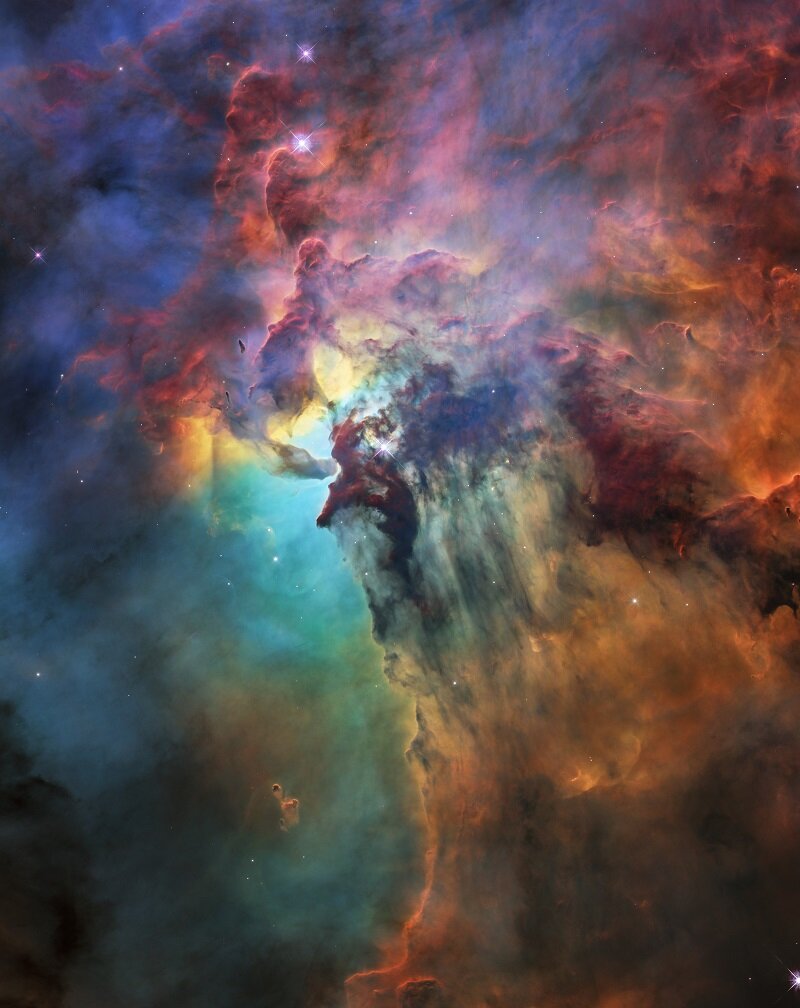Last updated July 20, 2018 at 3:02 pm
To celebrate its 28th anniversary in space the Hubble Space Telescope took this amazing image of the Lagoon Nebula.

The Lagoon Nebula. Click for a zoomable image. Credit: ESA/Hubble, NASA, STScI
The Lagoon Nebula, about 4000 light-years away from Earth, is an incredible 55 light-years wide and 20 light-years tall. This image shows only a small part of this turbulent star-formation region, about four light-years across.
This stunning nebula was first catalogued in 1654 by the Italian astronomer Giovanni Battista Hodierna, who sought to record nebulous objects in the night sky so they would not be mistaken for comets. Since Hodierna’s observations, the Lagoon Nebula has been photographed and analysed by many telescopes and astronomers all over the world.
Like many stellar nurseries, the nebula – an interstellar cloud of gas and dust – boasts many large, hot stars. Their ultraviolet radiation ionises the surrounding gas, causing it to shine brightly and sculpting it into a ghostly and other-worldly landscape of ridges, cavities, and mountains of gas and dust.
The bright star embedded in dark clouds at the centre of the image is Herschel 36, which shines about 200,000 times brighter than our Sun. Its radiation and hurricane-like stellar winds sculpts the surrounding cloud by blowing some of the gas away, creating dense and less dense regions.
Among the sculptures created by Herschel 36 are two interstellar twisters — eerie, rope-like structures that each measure half a light-year in length. These features are quite similar to their namesakes on Earth — they are thought to be wrapped into their funnel-like shapes by temperature differences between the hot surfaces and cold interiors of the clouds. At some point in the future, these clouds will collapse under their own weight and give birth to a new generation of stars.
The observations were taken by Hubble’s Wide Field Camera 3 between 12 February and 18 February 2018. Since its launch on 24 April 1990, the NASA/ESA Hubble Space Telescope has revolutionised almost every area of observational astronomy. It has offered a new view of the Universe and has reached and surpassed all expectations for a remarkable 28 years.





























































































































































































































































































































































































































































































